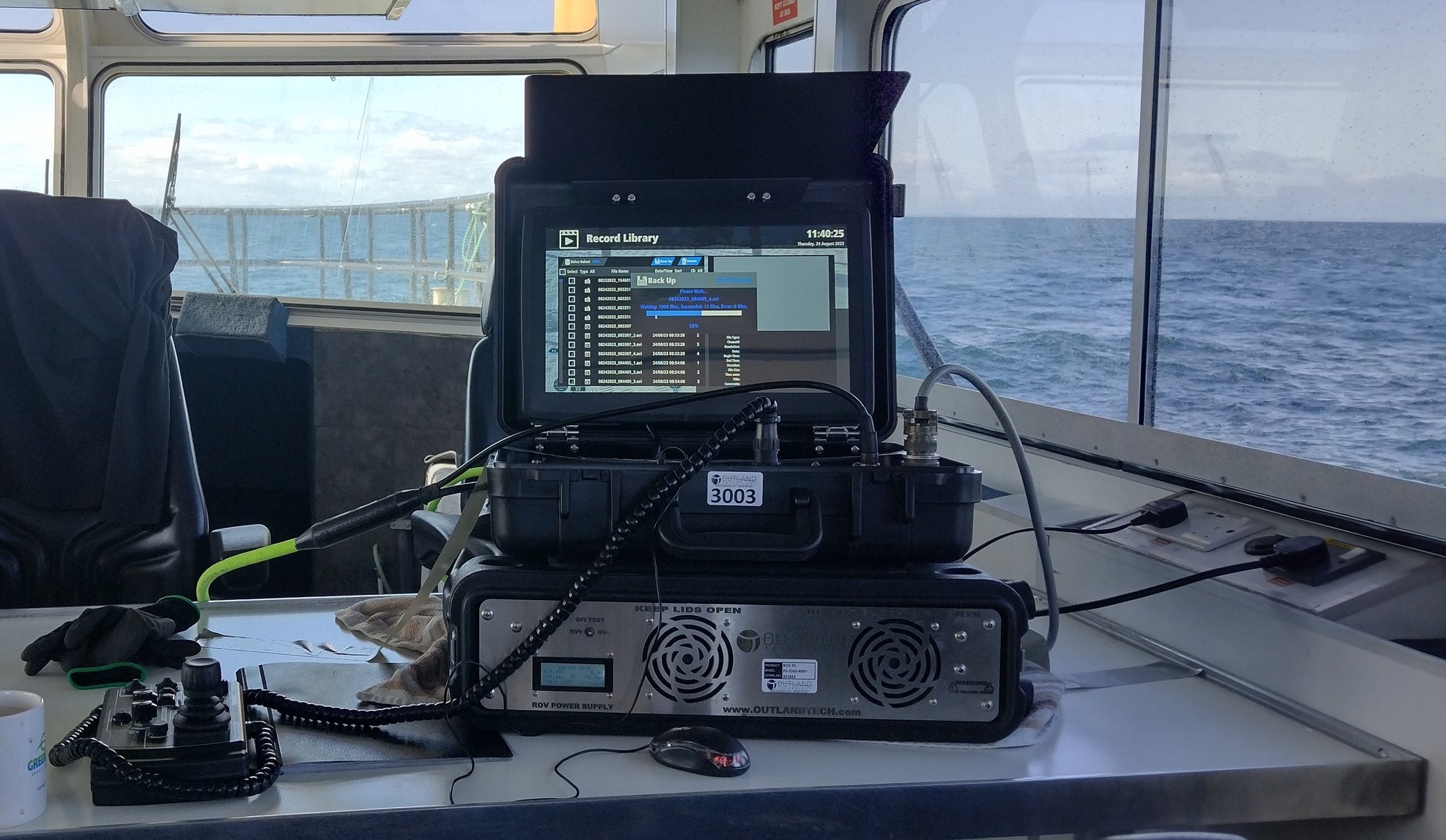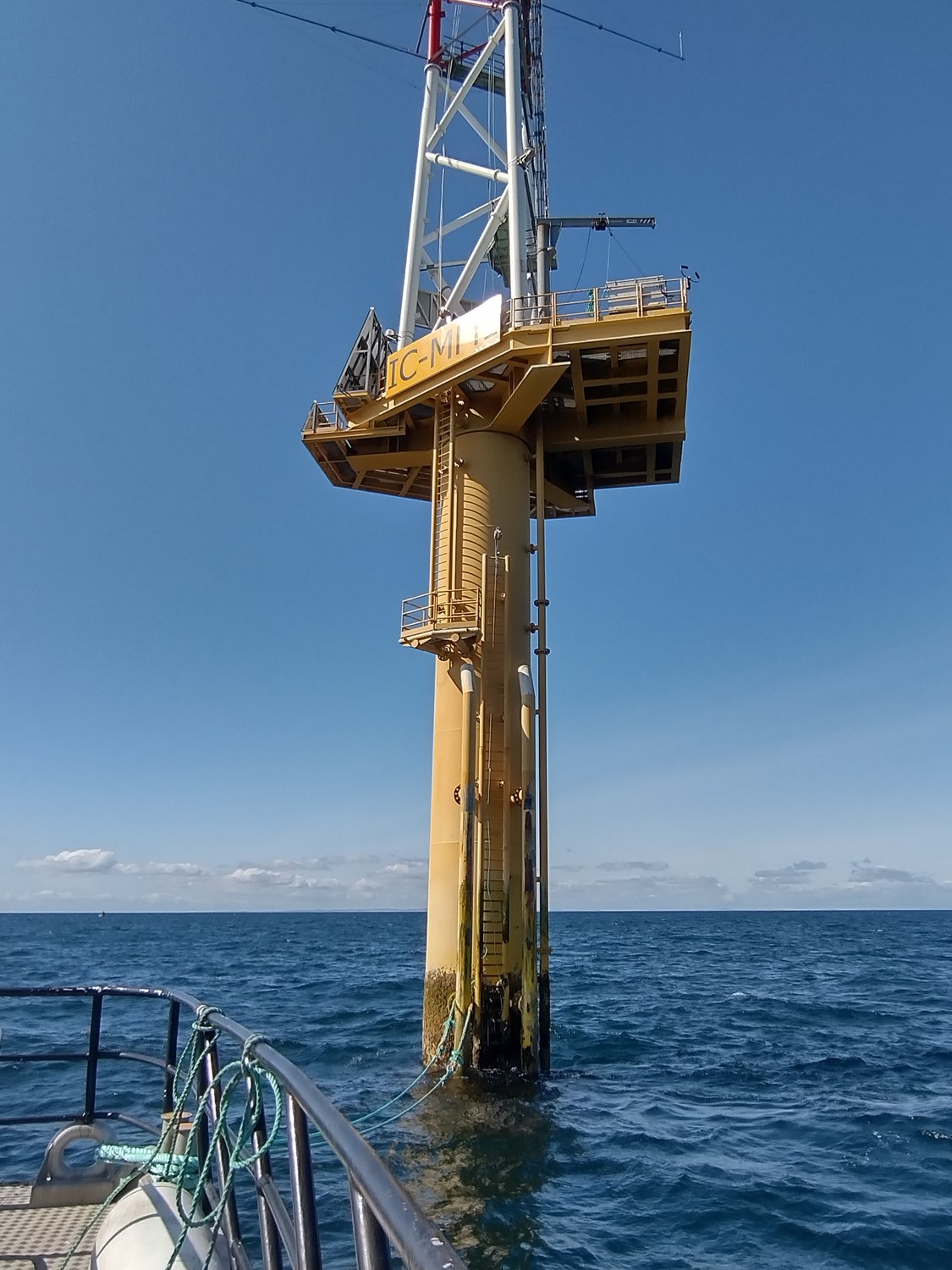Mast and marine growth inspection for an offshore windfarm
Mast and marine growth inspection for an offshore windfarm
INDUSTRY
Offshore Wind
Location
North East of Scotland
Services
ROV Inspection & SurveySplash zone inspection
Technology
Micro ROV FleetMultibeam Sonar & 3D Imaging
Positioning & Navigation Systems
The challenge
The client needed a comprehensive subsea inspection of the Met Mast, located off the east coast of Scotland, approximately one hour by vessel from Montrose harbour.
The primary objective was to assess marine growth coverage across the entire structure - from the splash zone down to the seabed at 52 metres - covering the monopile, plinth, caisson, and surrounding rock berm. This data was critical to informing ongoing asset maintenance and ensuring the structural integrity of the mast over time.
A key challenge of the project was to complete the inspection from a small, non-DP (dynamically positioned) windfarm crew vessel, with no space or infrastructure for traditional ROV launch-and-recovery systems. The project also involved strict time constraints and unpredictable visibility conditions which presented further challenges to overcome.
The solution
This project required a solution that was compact, quickly deployable, and capable of delivering high-quality imagery and reliable coverage across a wide depth range.
HPR deployed a compact and lightweight inspection-class ROV which was well-suited to vessel-based operations in confined environments. Operated by a two-man team, the system was installed, tested and deployed within a day. Mobilisation was completed aboard the crew transfer vessel supplied by the client, which departed from Montrose harbour.
Once moored up to the mast, the ROV was hand-launched from the vessel deck and operated from a temporary, weather-sheltered console setup onboard.
The results
The inspection was carried out as a single continuous dive, where the ROV surveyed the structure visually and captured detailed HD video and still imagery. All data was recorded and validated for post-survey analysis and later uploaded to the client’s designated platform.
The ROV covered all required inspection zones from just below the surface to the seabed at 52m.


The impact
HPR’s previous experience with similar platforms and rapid mobilisation capabilities allowed the client to meet its inspection objectives efficiently, with no disruption to broader offshore activities.
By accessing complex subsea structures in challenging conditions and completing the full inspection scope in a single dive, we reduced time on station and minimised risk to both personnel and equipment.
Overall, the successful deployment of our compact ROV system proved that high-quality subsea inspections can be delivered with a minimal equipment footprint and streamlined logistics. Understanding the condition in the splash zone was a critical part of this scope and HPR’s system is ideal for this type of work where larger ROVs struggle to work in –15m to LAT.
Get in toucH
Drop us a message to learn more about how we can support your future inspection needs.
